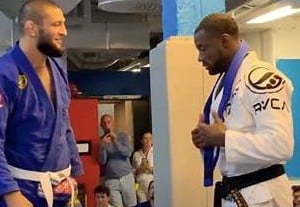Introduction
In the world of martial arts and combat sports, there is an age-old debate between drilling pre-set sequences and engaging in realistic, situational sparring. While memorizing combinations has its place in developing foundational skills, it’s specific sparring that truly shapes a fighter’s ability to adapt, improvise, and win under pressure.
Memorizing Sequences: Static Learning
Drilling sequences preset attacks, defenses, or transitions, teaches muscle memory, timing, and coordination. It’s like learning grammar before writing creatively. However, sequences are by nature rigid. They train practitioners for “ideal” conditions, where every move flows exactly as expected. The reality of combat rarely offers that luxury. Once unpredictability enters the ring, memorized steps often fall apart.
Specific Sparring: Dynamic Adaptability
Specific sparring, in contrast, places fighters in isolated scenarios with controlled variables, like defending a takedown against the cage or escaping from side control. It’s an incubator for real-time decision-making. The practitioner isn’t just reacting; they’re problem-solving against resistance, adapting to an opponent’s nuances, and internalizing the “why” behind each movement.
A good example of this is when you watch classes taught by one of the best Brazilian Jiu-Jitsu coaches, John Danaher. The students spend the majority of their time working from specific positions and with certain goals.
Why It Works
- Contextual Learning: Fighters understand techniques in the context they’re used—not just how, but when and why.
- Pressure Testing: Unlike memorized drills, specific sparring introduces resistance and unpredictability, mirroring real fight conditions.
- Skill Retention: Studies in motor learning suggest that variable practice (like sparring) leads to better retention and skill transfer than repetitive drilling.
- Confidence Building: Repeated exposure to live scenarios builds composure and confidence in high-stress situations.
Conclusion
Memorizing sequences is a necessary foundation, but it’s just the beginning. True proficiency is forged through specific sparring, where theory meets pressure. To grow as a martial artist or coach, one must effectively prioritize scenario-based training. Because in a fight, adaptability beats automation.




